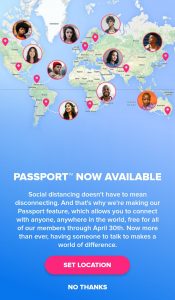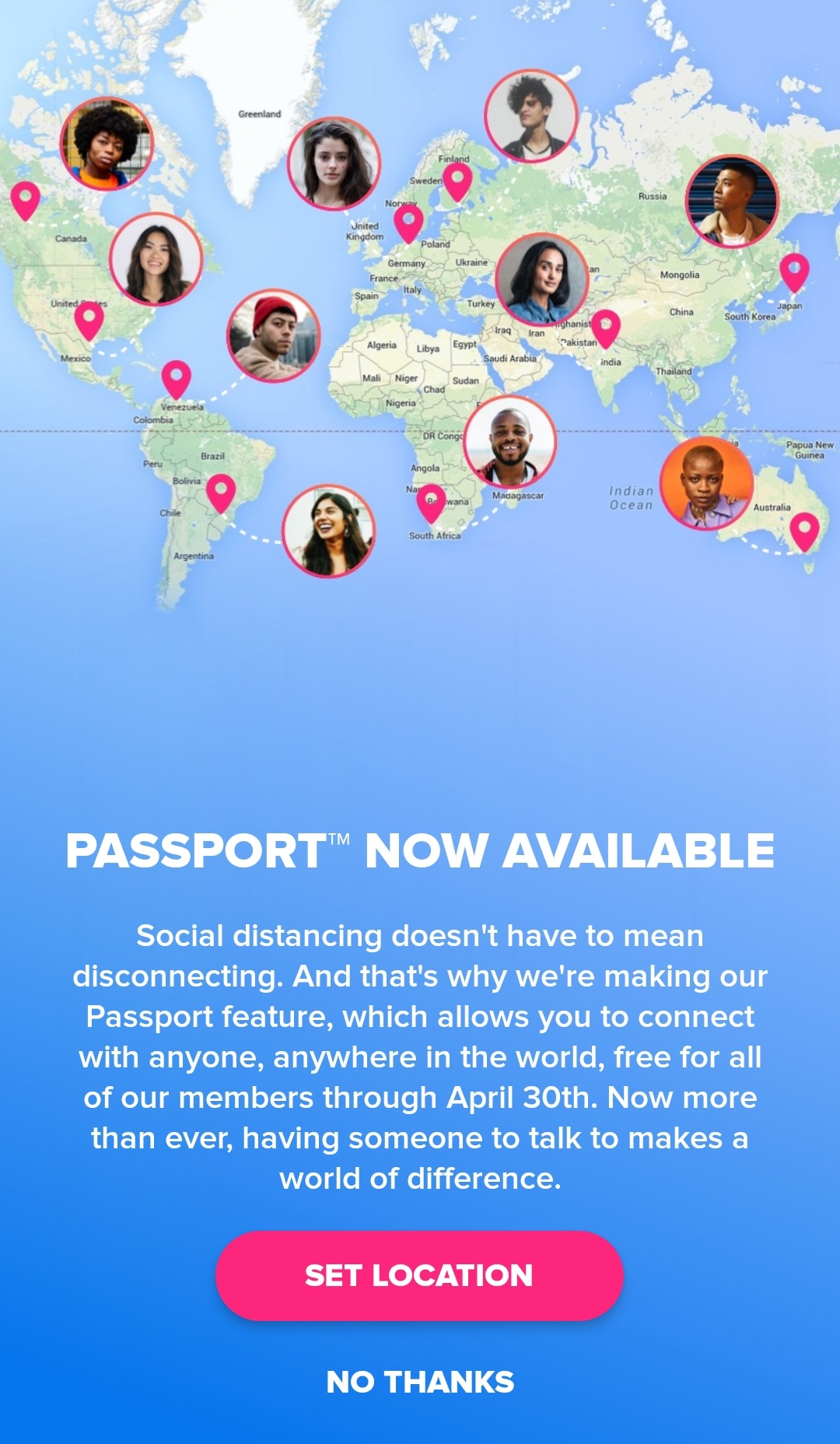Like many people around the world, I am currently self-isolating due to the COVID-19 pandemic. Not having had proper social interaction in weeks, I found myself spending more time on online dating applications, including Tinder. As is well known, Tinder uses the geographical location of each user to suggest profiles of other users within a certain distance. So usually, you see profiles of people who are physically in your area.
Earlier this week however, I matched with a user who turned out to be based in Melbourne but had just travelled through Hong Kong where I am currently based. Then a couple of days later, I matched with a user who turned out to be from Vienna, so I began to wonder if something was going on.

This was answered the next day on April 1st—Tinder was making their Passport feature available to all users through April 30th. And this was not an April Fools’ Day joke. This feature, which is normally available only to paying users, allows users to set their location to be anywhere in the world regardless of where they are physically located. It seems that this feature was rolled out earlier for some users, as my match from Vienna confirmed that this was how she found me.
Experimenting with this feature was certainly a lot of fun. I had noticed before when I was travelling that there seemed to be certain cultural differences when it came to Tinder profiles in different locations. Now that I had the freedom to check out profiles from around the world, it was interesting to see the different types of pictures that were preferred, different senses of fashion and make-up, different image filters, and different types of information that were present in the bio.
I soon realized that this provided a great opportunity for linguistic exploration of the online dating world. I have always liked seeing profiles of visitors to my area that were in different languages, not because I planned to match with them, but because I have always been interested in languages. With the Passport feature I would now be able to seek out profiles in different languages in their home towns, not just rely on their random passage through my area. Thus the Tinder Linguist was born; this is a record of that ongoing linguistic exploration.
p.s. Of course, because this is a dating app and I am using my own personal account for my research, I am limited to seeing the profiles of women who are looking to match with someone my age. So even if there are interesting gender-based differences in which languages are used on Tinder, I would not be in a place to tell. Also, as I can only take a look at so many profiles and am not keeping any counts, I can only speak anecdotally and only make pronouncements on general impressions based on the very small sample size I have looked at (e.g. none of the profiles in Kenya seem to use Swahili or any indigenous language). I am not conducting rigorous studies at all.
